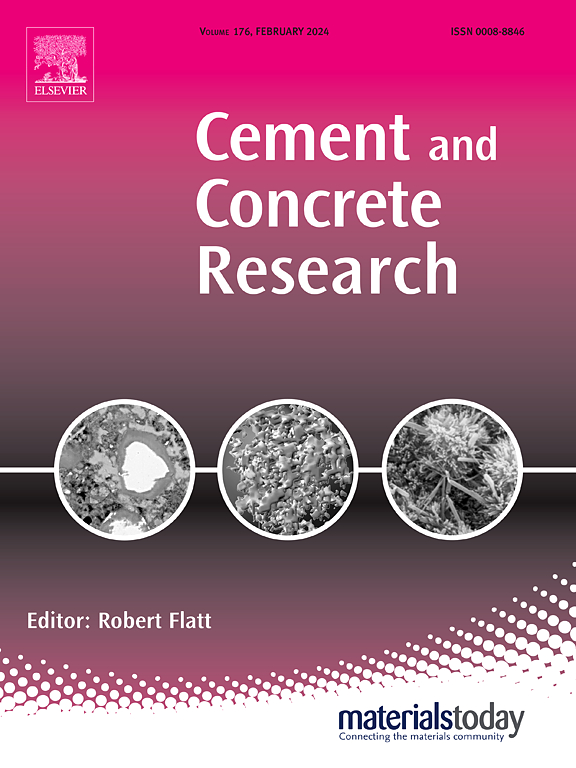Understanding long-term ASR expansion in glass powder ternary concrete blends through accelerated solubility test
IF 13.1
1区 工程技术
Q1 CONSTRUCTION & BUILDING TECHNOLOGY
引用次数: 0
Abstract
Glass powder (GP) has recently been recognized as a pozzolan by Canadian (CSA) and American standards (ASTM). However, the risk of ASR limits its widespread use in concrete production. This study analyzed a seven-year expansion dataset of GP binary/ternary concrete and correlated it with an accelerated solubility test designed with a synthetic pore solution. Results show that, despite the GP capacity to mitigate ASR, binary blends exceeded the normative expansion threshold. Ternary blends, particularly GP/metakaolin, proved most effective at reducing alkali levels and expansion. Low modified chemical index, reduced Na + K levels, and increased calcium consumption provided lower expansion. The analysis of the dissolution rate and different solution/binder ratios revealed that Na release is controlled by dissolution kinetics, rather than the GP content in the concrete. Early Na release in low GP mixes promotes alkali incorporation into pozzolanic hydrates, while high GP mixes saturate the pore solution, restricting further GP dissolution.
通过加速溶解度试验了解玻璃粉三元混凝土掺合物的长期ASR膨胀
玻璃粉(GP)最近被加拿大(CSA)和美国标准(ASTM)认定为火山灰。然而,ASR的风险限制了其在混凝土生产中的广泛应用。本研究分析了GP二/三元混凝土的七年扩展数据集,并将其与合成孔隙溶液设计的加速溶解度测试相关联。结果表明,尽管GP具有缓解ASR的能力,但二元共混物超过了规范的膨胀阈值。三元共混物,特别是GP/偏高岭土,被证明在降低碱含量和膨胀方面最有效。较低的改性化学指数、较低的Na + K水平和较高的钙消耗降低了膨胀率。对溶解速率和不同液胶比的分析表明,Na的释放受溶解动力学的控制,而不是受混凝土中GP含量的控制。低GP混合物中Na的早期释放促进了碱在火山灰水合物中的掺入,而高GP混合物使孔隙溶液饱和,限制了GP的进一步溶解。
本文章由计算机程序翻译,如有差异,请以英文原文为准。
求助全文
约1分钟内获得全文
求助全文
来源期刊

Cement and Concrete Research
工程技术-材料科学:综合
CiteScore
20.90
自引率
12.30%
发文量
318
审稿时长
53 days
期刊介绍:
Cement and Concrete Research is dedicated to publishing top-notch research on the materials science and engineering of cement, cement composites, mortars, concrete, and related materials incorporating cement or other mineral binders. The journal prioritizes reporting significant findings in research on the properties and performance of cementitious materials. It also covers novel experimental techniques, the latest analytical and modeling methods, examination and diagnosis of actual cement and concrete structures, and the exploration of potential improvements in materials.
 求助内容:
求助内容: 应助结果提醒方式:
应助结果提醒方式:


